7 Ways Coca-Cola's Cocaine Connection Goes Deeper Than We Realized

Everyone knows that Coca-Cola used to contain cocaine back in the olden days. But then they stopped putting the coke in Coke, and now the only white powders in that glorious sparkling elixir are sugar and caffeine. Right?
Wrong! Turns out Coke still contains coca leaf extracts, and the Coca-Cola company is actually deeply involved with the world’s biggest dealers of legal cocaine! Join us now as we snort up the whole sordid story of cocaine and Coca-Cola in seven big bumps.
The First Cocaine Drink: Vin Mariani
Let’s start at the beginning. The story of Coca-Cola is intertwined with the story of cocaine, and the story of cocaine starts thousands of years ago when an early human decided to try chewing on some leaves from a coca bush and discovered their invigorating and pleasurable properties.
Coca leaf has been an essential part of indigenous cultures in the Andes since long before Europeans showed up. The Incan Empire’s control over coca leaf production was integral to their success. On a continent without horses, travelling long distances by foot was a necessity, and the energizing powers of coca leaf helped messengers travel swiftly through mountainous terrain. Journeys were measured in “cocadas”—the distance one could travel before a coca chew wad was exhausted. The stimulating and endurance-enhancing properties of coca leaf were essential for a culture based in the high-altitude, low-oxygen environment of the Andes Mountains.
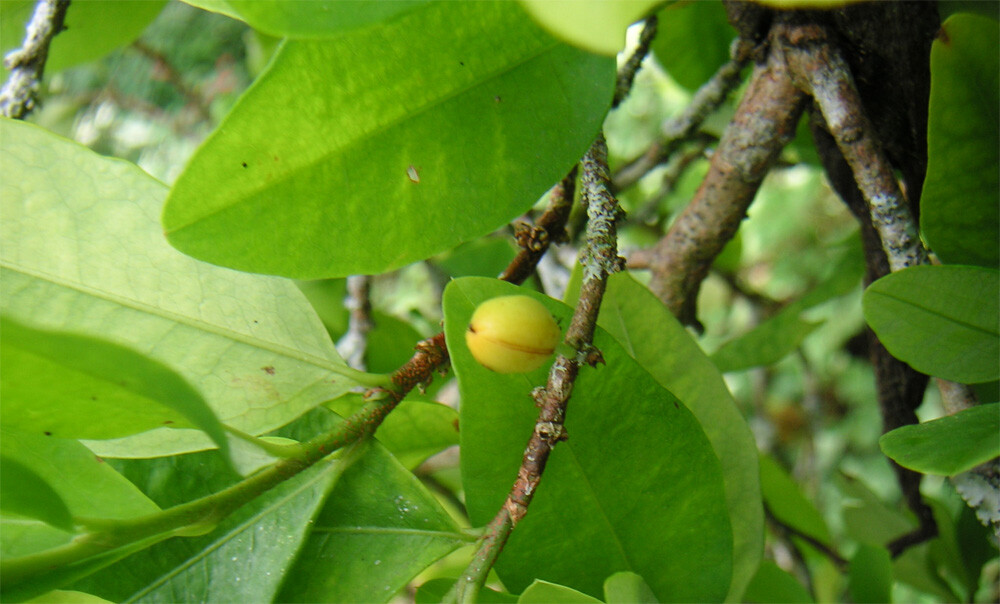
Just like marijuana is more than just THC, coca leaf is more than just cocaine. Actually, coca leaves don’t even contain cocaine, they contain an alkaloid very close to cocaine called ecgonine, which is converted into cocaine during the extraction process. (The chemical name for cocaine is actually benzoyl-methyl-ecgonine, but who’s going to remember all that when they’re frantically calling their dealer at 3am for a refill.)
The leaves also contain several other similar alkaloids with a variety of stimulating and medicinal effects. These alkaloids make up around 1% of the dried leaf by weight. So like with marijuana—where the effects of pure THC can be less pleasant than ingesting a range of cannabinoids together—it seems that having the full spectrum of coca alkaloids from the whole leaf provides a more balanced and pleasant experience than ingesting pure cocaine on its own.
It took a few centuries before coca leaves made their way back to Europe in significant quantities. Cocaine was first produced from coca leaves in Italy in 1860. One major effect of this discovery was to revolutionize surgeries, as cocaine was the first known topical anesthetic. Instead of knocking patients unconscious with chloroform, which was risky and sometimes killed people, carefully applied dabs of pure cocaine could numb isolated parts of the body. This made delicate surgeries much easier to perform, and led to greater understanding of the nervous system. Cocaine also became a popular treatment for painful toothaches.
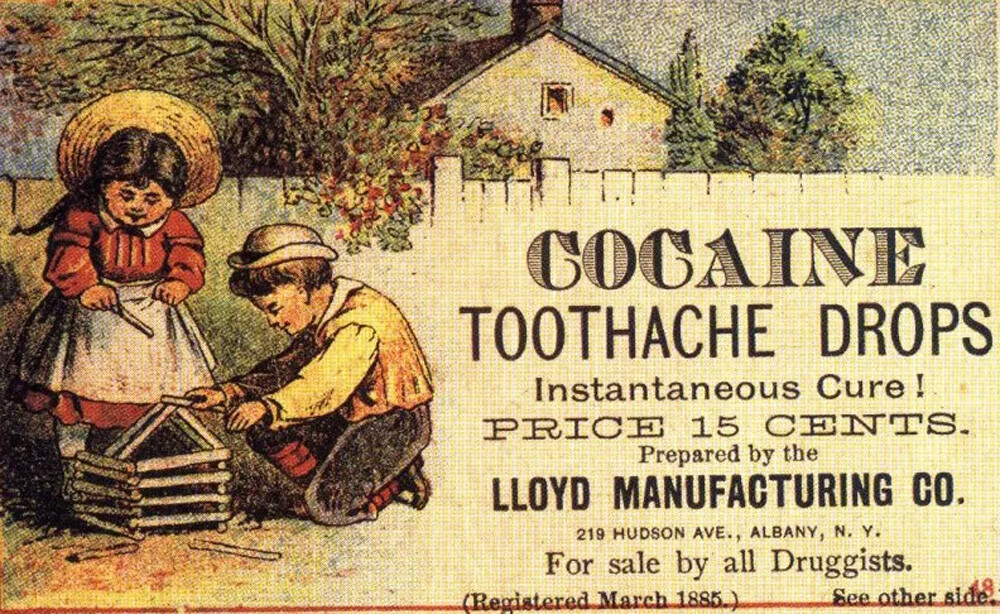
The most popular application of coca was created in the 1860s by a French chemist named Angelo Mariani, who mixed concentrated coca leaf extract into wine and called it "Vin tonique Mariani à la Coca de Pérou"—better known as Vin Mariani. This drink was a huge success and made Mariani rich and famous.

Mariani collected endorsements from celebrities and published them in fancy volumes. His coca wine was celebrated by many luminaries including Queen Victoria, President Ulysses S. Grant, and inventor Thomas Edison; eulogized by authors including Jules Verne and Arthur Conan Doyle; praised by the Grand Rabbi of France and promoted by Pope Leo XIII, who was known to always carry a flask of the potent beverage on his person—and who gave Mariani a special gold medal for creating such a heavenly concoction.

via The Atlantic
Mariani put out many variations on his drink, including more powerful versions—such as Mariani’s Elixir—some of which had eight times the potency of his coca wine.
Unbeknownst to Mariani, he had created something completely new by blending cocaine and alcohol together. The two drugs have a synergistic effect when mixed—they combine to form a third unique drug called cocaethylene, which produces an even stronger euphoric effect than either substance on its own.
The Origins Of Coca-Cola
Vin Mariani was a trend-setting beverage, and dozens of imitative competitors sprang up across Europe and the USA, with names like Hall's Coca Wine, Elixir Mondet, and Kola-Coca. There was even a Coca Beef Tonic which combined the power of coca with “muscular fibre, blood, bone and brain of carefully selected healthy bullocks, dissolved in rare old sherry wine.” Sounds like the perfect aperitif for those adhering to Jordan Peterson’s famous all-meat diet.
In 1884, a Confederate veteran in Georgia named John S. Pemberton created a Vin Mariani knock-off called Pemberton's French Coca Wine. He had found that coca drinks helped him reduce his use of morphine, to which he had become addicted after war injuries. In 1885, Atlanta passed some of America’s first liquor prohibition laws, so Pemberton replaced the wine with carbonated water, added some kola nuts as a caffeine source and for flavoring, and renamed his drink Coca-Cola. He launched a new alcohol-free ad campaign promoting it as “Coca-Cola: The Temperance Drink.”
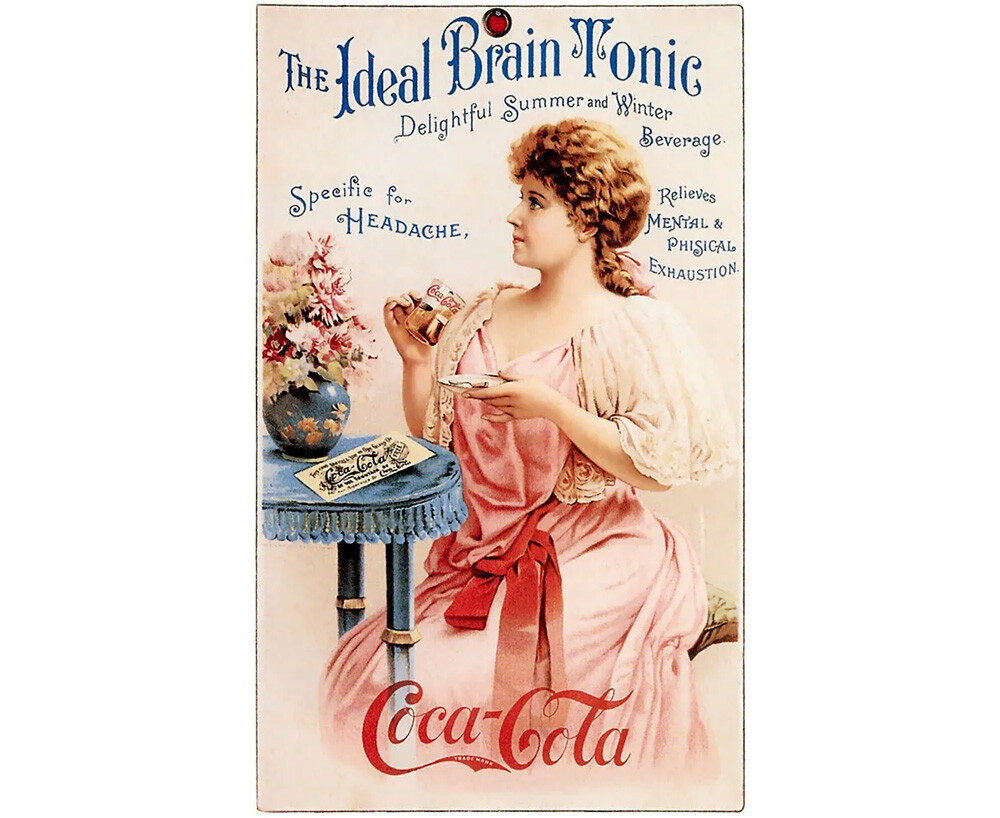
With some clever advertising and the stimulating power of coca, Coca-Cola took off. Although the federal ban on liquor didn’t happen until 1919, some cities and states began banning booze much earlier, spurring increased use of non-alcoholic “soft drinks” like Coke—which gave a different kind of kick. The fact that Pemberton marketed his drink as "a most wonderful invigorator of sexual organs" probably didn’t hurt sales either.
Originally, Coca-Cola was only available at soda fountains, which were segregated at the time, so it was only consumed by whites and was known as an “intellectual beverage.” In 1899, when Coca-Cola started selling their drink in bottles, it suddenly became accessible to the Black community, which led to a racist backlash against a drink associated with cocaine.
Cocaine wasn’t actually banned in the US until 1914, but white hysteria around use of drugs like opium, cannabis, and cocaine by minorities had been growing since the late 1800s. Hyped-up media reports of "negro cocaine fiends” spread fear, and Coca-Cola’s new cross-culture availability was now perceived as promoting dangerous cocaine use among Black people.

In 1903, Coca-Cola bowed to these fears, and to the growing wave of anti-drug laws which had been sweeping America, by saying they had eliminated the cocaine from their drink. Yet the company’s ambivalence around coca leaf was evident, because although they had disavowed cocaine, for years after, Coca-Cola was still running ads with pictures of Peruvians chewing coca and extolling the stimulating properties of the leaves.
To make the cocaine-free change, Coca-Cola had begun importing Peruvian coca leaf to a chemical plant in New Jersey, where cocaine was extracted and sold to a pharmaceutical company. The remaining leaf product was then combined with kola nut and caffeine (extracted from sub-par coffee beans and tea dust) to create a blend dubbed “Merchandise No. 5”—a key ingredient in the Coca-Cola secret formula. Coca-Cola didn’t own the chemical plant, by the way. The owner would be a separate company now known as the Stepan Corporation, which has exclusive permission to import coca leaves and an exclusive contract with Coca-Cola to supply them with the extract.
Technically, Coca-Cola never actually contained cocaine in the first place; since it was made from an extraction of whole coca leaves it would actually have contained ecgonine and other stimulating coca alkaloids. Yet this subtle difference was not something Coca-Cola wanted to try explaining in detail.

By the way, Coke isn’t the only classic soda drink that changed its recipe to take out a drug. 7-Up started out in 1929 with the catchy name of “Bib-Label Lithiated Lemon-Lime Sodas” and contained lithium until 1948—a chemical which acts as a mood stabilizer and is now used in the treatment of depression and schizophrenia.
Coca-Cola Under Attack, For Caffeine!
By 1911, Coca-Cola had become a popular brand, and were facing their own imitators. One major competitor was Gay-Ola, which marketed their drink as a sort of generic Coca-Cola, but cheaper and without the coca leaves. Gay-Ola drink syrup was sold in unmarked barrels painted the same shade of red used by Coke.
At first, Coca-Cola sent in undercovers to soda shops, to make sure they weren’t using Gay-Ola as a cheaper substitute. Then Coke finally sued Gay-Ola and forced them to change their barrel color. Gay-Ola was a product name clearly 100 years ahead of its time, and whoever owns that trademark should seriously consider a relaunch.
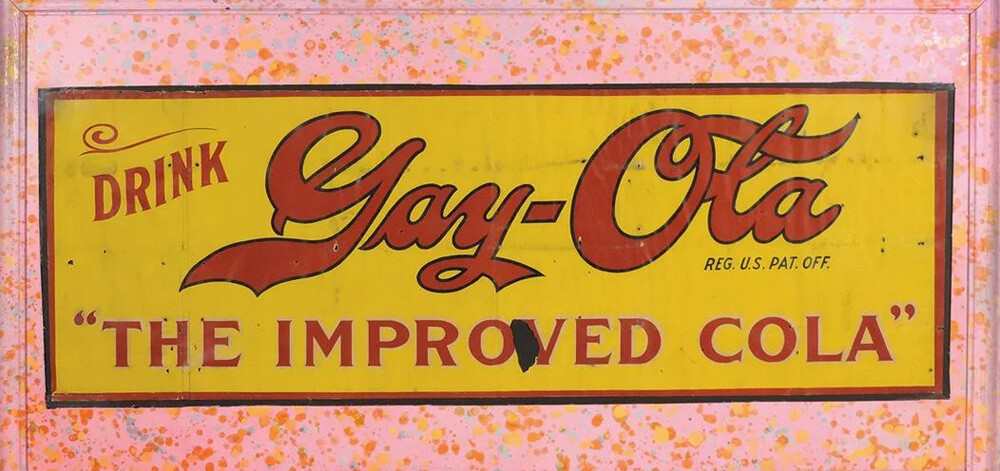
The Coca-Cola brand also came under attack from the feds around this time. In 1909, federal agents actually raided a Coca-Cola delivery truck and seized its cargo, leading to a huge court case called United States vs. Forty Barrels and Twenty Kegs of Coca Cola.
The Pure Food and Drug Act had become law in 1906, and the feds had two problems with Coca-Cola. First, did it contain cocaine? If not, then wasn’t putting “coca” in the name false advertising? Second, the new law forbade adulterating food and drink—so was Coca-Cola “adulterated” with caffeine, and if so, was the high level of caffeine in the drink harmful? Was Coca-Cola pushing a dangerous drink on the nation’s kids?
During the trial, Coca-Cola denied ever marketing to minors, and denied that their drink was ever referred to with drug slang words like “dope,” even though the term was widely used. Coke was popular among young people—teenagers would say “give me a dope” when asking for a Coca-Cola in a soda shop. Many considered Coke to be a blight on youth, and some religious newspapers began publicly refusing to run ads for the devil’s drink.
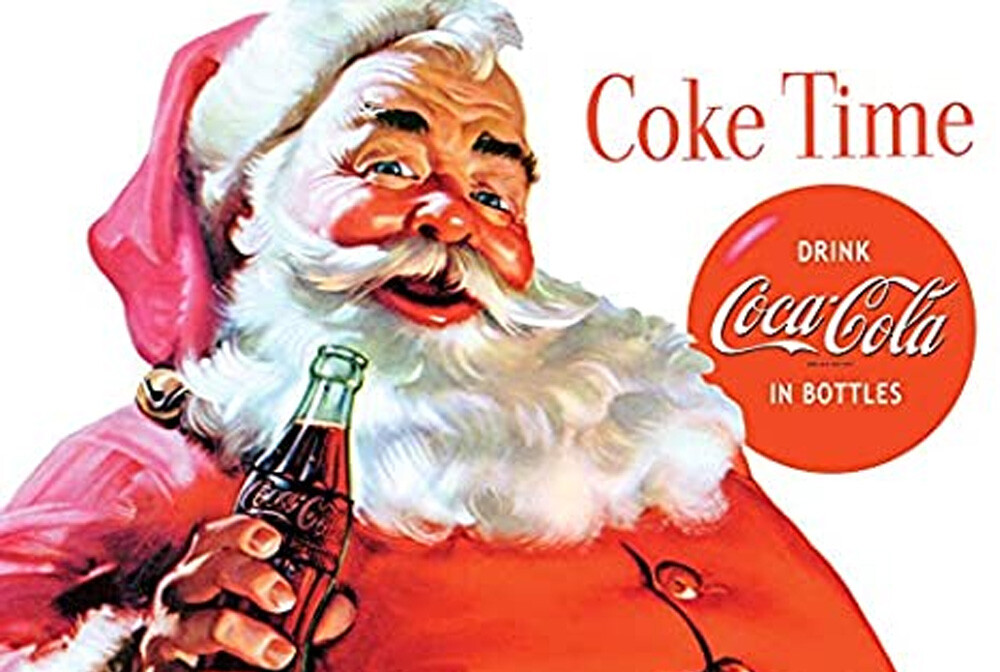
The case dragged on for nine years, and eventually reached the Supreme Court. The trial received substantial media coverage and actually helped promote the Coca-Cola brand. In the end, the case fizzled out like an open can of Coke sitting in the sun. The Supreme Court ruled that the caffeine in Coca-Cola was indeed an additive, but by then, Coke had already changed their formula to drop the caffeine level down by half, so Coca-Cola just paid the government’s court costs and they all called it a day.
The court said Coca-Cola’s name was acceptable because the recipe did contain some small amount of coca leaf and kola nut. But this also set a precedent, because if Coca-Cola were ever to completely remove coca leaves from their recipe, then their trademarked name could be in jeopardy. Their unique branding and growing soda empire depended on maintaining their coca leaf supply.
Coca-Cola Helps Write Anti-Coca Treaties
During the 1950s, more countries signed up for the US-led global drug war. Harry Anslinger, the head of America’s anti-narcotics bureau—best known and most hated for launching the ban on marijuana—was the main architect of this global prohibition push. He began working on a worldwide drug enforcement treaty through the recently created United Nations. Coca-Cola executives had friendships and lengthy correspondence with Anslinger, supporting him politically in return for his protecting their access to coca leaves.
When the Single Convention on Narcotic Drugs was ratified by the United Nations in 1961, it mandated the destruction of all wild coca bushes and complete eradication of coca leaf from the planet. Indigenous people have been using coca leaves for millennia, but the new global treaty demanded a forcible end to their coca-related culture and traditions.

Yet the treaty does make one single exception—for the cultivation and sale of coca leaves to be used in “decocainized” products—a loophole which was widely understood to be aimed solely at Coca-Cola, and has been used exclusively by them for the past 60 years. This exemption was known at the time as “the Coca-Cola Joker.” In return, Coca-Cola agreed to support the eradication of coca cultivation for everyone else. The president of the Stepan Corporation was happy to demonize the indigenous practice of chewing coca leaves, praising the UN’s efforts towards “elimination of the blight of coca mastication.”
Coca-Cola and Stepan had used their growing political power to become the only companies in the world legally allowed to cultivate, import, and use coca leaves. This meant that while there could be other “cola” drinks on the market, there could only ever be one “coca” drink. Coca-Cola’s global monopoly and trademark was secure.
The Secret Coca Plantation In Hawaii
After the UN treaty passed, Coca-Cola executives had a realization: If they could grow their own coca supply in the USA, then the elimination of coca plants from South America would leave them with a truly global monopoly on coca leaf, and cocaine production!
So they got special permission to cultivate coca from the Bureau of Narcotics, then in 1964, they made a secret deal with the University of Hawaii, to start an experimental coca leaf plantation. At first, the university's president couldn’t promise to keep Coca-Cola’s involvement hidden, telling them, “Being a public university, we really can have no secrets!” But under pressure from the head of the Narcotics Bureau, he changed his mind and pledged to keep the soda giant’s name out of it. Coca-Cola’s political connections had paid off again.

For two decades, Coca-Cola tried their hardest to grow coca leaves in Hawaii, and failed. Their crops kept getting hit with an unknown virus causing root rot and wilting. During the 1970s, the blight spread over all 10 acres of coca crops. Then in 1982, a hurricane damaged the island, and they abandoned the whole coca plantation project two years later.
The coca field didn’t sit idle. The US government saw the coca virus as an opportunity and took over the failed project with a new plan. They spent the next 20 years trying to weaponize the virus against coca plants, so they could spread it around coca-growing nations. They even hoped they could target variations of the virus against cannabis and opium poppies too, driving all the world’s best plants to extinction with global biological warfare. In 2000, the New York Times ominously claimed the new virus, known as fusarium oxysporum, “could wipe out much of the coca crop within a year.”
But in the end, the whole virus-spreading effort was deemed unlikely to succeed and too controversial, and so it was abandoned. Or so they claimed. The virus has popped up in Bolivia, and locals are pretty suspicious of just how it got there, given that there's a good bit of social distance separating South America from Hawaii.
“New Coke” Cut Out The Coca Leaves
With their Hawaiian coca plantation a failure and Reagan’s war on drugs heating up, Coca-Cola still worried about maintaining their coca leaf supply. They had also been losing market share to Pepsi, and had been considering creating a sweeter version of their classic recipe. Executives thought they could solve two problems at once, by introducing a new formula with a sweeter taste, and without any coca leaf extract.
In 1985 Coca-Cola launched New Coke, promoting the supposedly improved taste while keeping the lack of coca leaf a secret. The new formula was famously a disaster, and Coca-Cola quickly reverted back to their original recipe. They had learned a valuable lesson: Coca-Cola without the coca was just not the real thing.
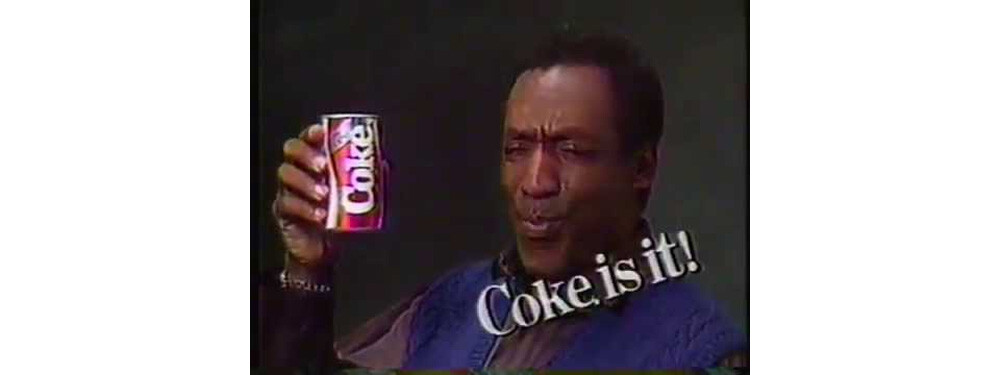
Coca Cola
Fair Trade Cocaine?
So where does this leave us today? The connection between Coca-Cola and coca leaf now exists as a weird nexus between the global drug war and international trademark laws. The Stepan Corporation is the only company outside of South America that can legally import and work with coca leaves. They buy hundreds of tons of coca leaves each year and produce the world’s supply of legal medicinal cocaine, which is still used in certain eye surgeries. This is all done in the US, keeping all production and profits outside of the coca-growing nations.
Pro-coca activists in South America have repeatedly tried launching their own coca drinks, made with unadulterated coca leaf extract. Over the past 20 years, drinks like Coca Sek, Coca-Colla, and K-Drink have been released to local markets in Colombia, Bolivia, and Peru. Yet since they contained coca alkaloids, none of these drinks were allowed for export, and the UN Narcotics Control Board quickly stepped in to make threats about the mere existence of such beverages. Even a Peruvian coca-based drink with the alkaloids removed was shut down by the UN regulators.

A group called Fair Trade Coke is now pointing out the hypocrisy of this coca situation. The nations where coca plants have grown for millennia have no right to export or process them for their own gain. This exclusive privilege is in the hands of an American company and Western pharmaceutical industries, under the force of UN treaties.
Coca-Cola is a bad company for many reasons that have nothing to do with coca leaf. Over the years they have been accused of killing union leaders, using former NSA agents to hack and wiretap consumer safety and environmental groups, as well as depleting groundwater supply in impoverished communities and then selling it back to them as an unhealthy, sugar-laden soda. Coca-Cola also apparently has deep ties with the CIA—their global network of bottling plants helps cement US imperialism around the world.
When you ask Coca-Cola about coca leaf today, their spokespeople will say, “We just can't talk about the ingredients.”

Coca comes from a leaf, not so different from how coffee comes from a seed. The fact that coffee is celebrated and coca leaf is vilified is an arbitrary accident of history which could have easily gone the other way. Frankly, the world would be a better place if coca leaf wasn’t demonized and forbidden, and if Coca-Cola didn’t have a global monopoly on coca drinks. That way, people everywhere could enjoy a variety of coca-based beverages with all the wonderful alkaloids included, and hopefully more of the profits could be going back into the coca-farmers’ pockets.
Wouldn't you be much happier if Starbucks was selling coca-based drinks alongside their coffee selection, and had some special brews with the two ingredients blended together? Who else wants a Vanilla Cocaccino with oat milk? Yum!
Dana Larsen is the founder of The Coca Leaf Cafe in Vancouver, Canada. It’s the only place in the Northern Hemisphere where people can get coca leaf, coca tea drinks and live coca plants. His website is danalarsen.com, and he tweets at twitter.com/danalarsen.
Top image: Mike Mozart






